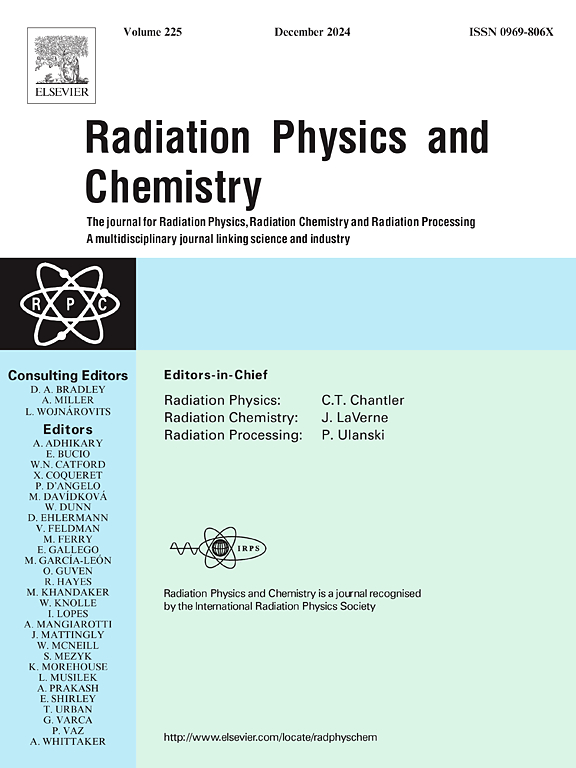注:基于unet的伽马射线全谱定性和定量分析方法
IF 2.8
3区 物理与天体物理
Q3 CHEMISTRY, PHYSICAL
引用次数: 0
摘要
快速全谱分析对公共辐射安全至关重要。现有的分析算法面临着低计数、低分辨率和重叠伽马谱的挑战。针对这些问题,提出了一种改进的Attention-Unet神经网络全谱伽玛射线分析方法,旨在基于伽玛射线能谱形成原理,建立伽玛射线能谱与入射能谱之间的映射关系,实现快速的定性和定量分析。结果表明,在伽玛射线分支比阈值为10%的情况下,对于入射光谱输出中80%以上的特征峰,Attention-Unet模型的峰值位置检测精度达到95%以上。对于正确识别的特征峰,峰数的正相对误差小于5%,负相对误差小于10%。此外,该模型对276.40 keV、279.54 keV、284.31 keV、356.01 keV和364.49 keV之间的重叠峰的分离精度达到97%以上,峰数的最大分离误差为16%。该模型对训练中未遇到的特征峰混合谱和漂移谱具有一定的泛化能力和抗干扰能力。最后,通过注意力- unet的消融实验验证了注意力改善的有效性。Attention-Unet方法简化了频谱分析过程,为深度学习方法在频谱分析中的应用提供了技术基础和研究视角。本文章由计算机程序翻译,如有差异,请以英文原文为准。
Attention-Unet based gamma-ray full spectrum qualitative and quantitative analysis method
Rapid full-spectrum analysis of gamma-ray spectra is crucial for public radiation safety. Existing analytical algorithms face challenges in low-count, low-resolution, and overlapping gamma spectra. To address these issues, an improved Attention-Unet neural network method for full-spectrum gamma-ray analysis is proposed, aiming to establish a mapping relationship between the gamma-ray spectra and incident spectra based on the principles of gamma-ray spectra formation, for rapid qualitative and quantitative analysis. The results indicate that, with a gamma-ray branching ratio threshold of 10 %, the Attention-Unet model achieves an accuracy of over 95 % in peak position detection for more than 80 % of the characteristic peaks in the incident spectra output. For correctly identified characteristic peaks, the positive relative error in peak counts is less than 5 %, and the negative relative error is below 10 %. In addition, the model achieves an accuracy of over 97 % in separating overlapping peaks between 276.40 keV, 279.54 keV, 284.31 keV, 356.01 keV, and 364.49 keV, with the maximum separation error in peak counts being 16 %. The model demonstrates a certain degree of generalization and anti-interference capability when applied to characteristic peak mixed spectra and drift spectra that have not been encountered during training. Finally, the ablation experiments of Attention-Unet demonstrated the effectiveness of the Attention improvement. The Attention-Unet approach simplifies the spectral analysis process, providing a technical foundation and research perspective for the application of deep learning methods in spectrum analysis.
求助全文
通过发布文献求助,成功后即可免费获取论文全文。
去求助
来源期刊

Radiation Physics and Chemistry
化学-核科学技术
CiteScore
5.60
自引率
17.20%
发文量
574
审稿时长
12 weeks
期刊介绍:
Radiation Physics and Chemistry is a multidisciplinary journal that provides a medium for publication of substantial and original papers, reviews, and short communications which focus on research and developments involving ionizing radiation in radiation physics, radiation chemistry and radiation processing.
The journal aims to publish papers with significance to an international audience, containing substantial novelty and scientific impact. The Editors reserve the rights to reject, with or without external review, papers that do not meet these criteria. This could include papers that are very similar to previous publications, only with changed target substrates, employed materials, analyzed sites and experimental methods, report results without presenting new insights and/or hypothesis testing, or do not focus on the radiation effects.
 求助内容:
求助内容: 应助结果提醒方式:
应助结果提醒方式:


